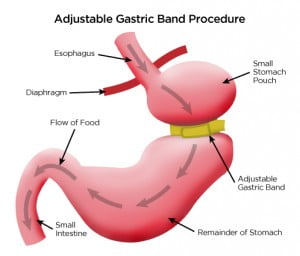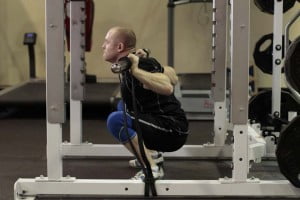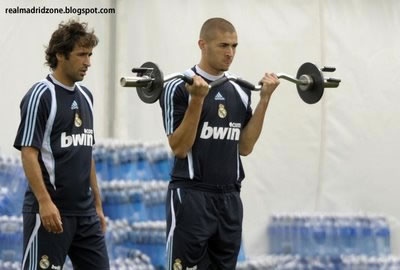First of all dear reader apologies for missing out on February I haven’t been keeping this blog up to date as I would like. Something I plan to remedy in the immediate future.
Blood pressure during resistance exercise pregnant vs non pregnant women.
- 10 pregnant (22-24 weeks and mean age 25) and 10 non pregnant women (average age 25) took part in the study.
- It involved 5 sessions using Pec Dec fly and leg extension exercises. Session 1 involved working out their 1 RM and the next 4 sessions involved either 1 or 3 sets of 15 using 50% of their 1RM for both exercises.
- Researchers looked at – Heart rate, Dystolic blood pressure, Systolic blood pressure, mean blood pressure and oxygen consumption during the exercise conditions.
- Leg extension had a greater effect on heart rate and blood pressure than chest fly. Pregnant group had a lower blood pressure in all conditions.
- Researchers concluded resistance training to be safe for pregnant ladies.
TL;DR – 50% of your 1RM on machine weights is perfectly safe if your pregnant.
- 15 Patients volunteered for the study they where split into two groups – resistance training group (n=7, average age = 53.6) and usual care (n = 8, average age = 44).
- Before the 12 weeks baseline measurements where taken for Body weight, body composition, flexibility, hand grip strength and sit to stand test.
- No difference was found in body weights or body composition both groups lost significant amounts of weight.
- Resistance trained group where more flexible, had a better v02 max and did better in sit to stand test.
TL;DR – Resistance training makes untrained people more flexible and stronger.
Effect of Box Squat, Band Squat and Stretching on lower body power.
- 12 participants took part in the study which involved 3 different conditioning/warm ups. 1 – 3×3 @ 3RM box squat, 2 – 3×3 with heaviest resistance bands available and 3 – 30 second static stretch for muscles of the lower body.
- Lower Body power was assessed using squat jump performed with 20 kg in a smith machine using a linear transducer and was performed pre-warm up, 5 and 10 minutes post.
- Box squat and Band squat both significantly improved power output 5 and 10 mins post warm up whist static stretching reduced power output.
TL;DR – performing squats with weights or bands can increase lower body power bands are less expensive and easier to transport.
Relationship between Vertical and Horizontal jumps and muscular performance.
- 17 subjects completed a battery of tests – 30m sprints, muscle stiffness test, ultrasound measures and a mixture of jump testing (countermovement jump, drop jump and squat jump all done on two legs and one leg.)
- Horizontal peak and mean forces had a better relationship to sprint speed than did vertical measures.
- All jump variables showed large and very large relationships to sprint speed with one legged tests tending to have a better relationship vs two legged jumps.
- Muscle stiffness or architecture showed no relationship with speed.
TL;DR – horizontal single leg jumping probably is your best single best bet for a jump test to predict sprint speed over 30m.
Are three contact bouts reflective of repeated high intensity bouts in rugby league?
- GPS systems defined a repeated high intensity effort as 3 or more efforts (running or contact) that take place with short rest periods. It has been suggested that after a number of such bouts players become less effective due to fatigue. However there is little evidence for this.
- This study set out to look at this. 12 semi professional rugby leauge players took part in 3 conditioning. 2 x 10 minute halfs of off side touch where performed with one of 3 conditions. 1/2/3 contact efforts each contact effort was performed every 2 minuites and consisted of 5 seconds of wrestling.
- GPS was used to determine the movement demands of the game.
- Single contact bouts reduced the running distance trively, 2 contact bouts produced small reductions and 3 contact bouts produced moderate reductions in running distance.
- The authors concluded that contact sport athletes should perform contact efforts mixed with running and maintaining intensity to develop their sports specific fitness.
TL;DR – if you want to condition for rugby you need to hit stuff and run.
Conditioning games vs High intensity intermittent training for handball.
- Eightteen highly trained handball players took part in the study. They were assigned to either HIT or small sided games for an 8 week period. HIT consisted of 12 to 24 reps of 15 seconds of running interspersed with equal rest. Small sided games where played as 3 v 3.
- Exercises duration and recovery where matched for both conditions.
- Both groups showed significant improvements in Yo-Yo level 1, 10 and 20m sprint times, Hand ball agility test, 1 RM bench press and countermovement jump.
- Conclusions of the researchers where that both where efficient fitness regimes and small sided games might be prefered for in season training.
TL;DR – con games and MAS running are as effective as each other for Handball players.



















